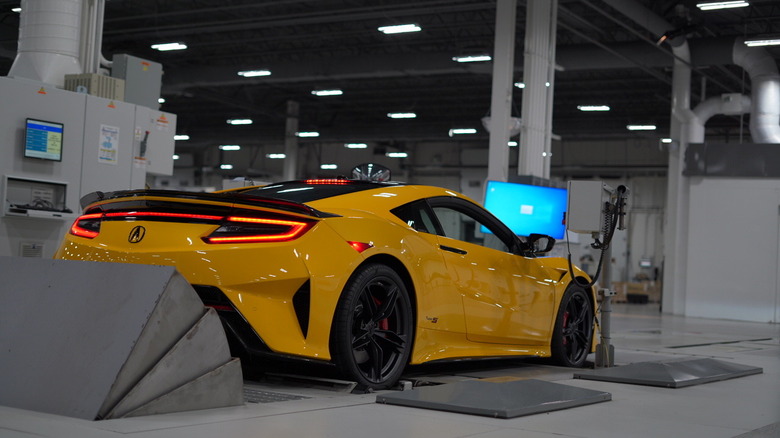The R35 Nissan GT-R is not long for this world, but as it shuffles off its mortal coil it leaves us with a promise: the GT-R badge will live on. Nissan has long said an R36 would come, but the New York International Auto Show provided the first few details about the upcoming car’s development. According to Nissan North America’s chief planning officer, speaking with The Drive, the next-generation hybrid-powered GT-R is just three to five years away — and if Honda wants to let Nissan piggyback off of NSX development, the latter company is willing to play ball.
Nissan North America senior vice president and chief planning officer, Ponz Pandikuthira, told The Drive that the R36 will be a hybrid — preferably a plug-in hybrid that can operate to some degree on electric power alone, and ICE power will come from a twin-turbo six-cylinder engine. He noted the VR35 V6 in the new Armada, which shares its VR series with the R35’s VR38 mill, and the whole setup could take advantage of Nissan’s foray into solid-state batteries. Pandikuthira particularly emphasized the GT-R’s daily usability as a point towards hybridization, ensuring the car remained usable to “drive your kids to school” or “go to the grocery store.”
But what about Acura?
That makes Pandikuthira’s other remarks, about the possibility of working with Honda on the R36, sound particularly odd. The second-generation NSX’s much-maligned development time could theoretically fit within Nissan’s three-to-five-year timeline, if the two companies started working together right this very second, but the two models come from very different walks of life. Pandikuthira himself seemed to recognize the oddity of the suggestion when speaking to The Drive:
“Can we do a next-generation NSX and GT-R off the same platform, make the NSX authentic to what it stands for and make a GT-R authentic to what it stands for? So they are not clones?” Pandikuthira asked rhetorically. “Can you co-develop two cars like that? I think we can.”
“The authenticity of this matters,” Pandikuthira continued. “An Acura NSX had a very different origin of what that car was. Super lightweight, all aluminum.” The VP described the supercars’ differences as the NSX being “super precise, lightweight, aerospace execution, whereas a GT-R is a brute, but a sophisticated brute.”
It’s certainly possible for one platform to support both four-seat front-engine and two-seat mid-engine designs, particularly with the versatility of modern modular platforms, but the NSX and GT-R would likely end up on something bespoke — cars like the second-gen NSX and the Porsche 718 and 911 all run on unique platforms. The outgoing GT-R, like the Toyobaru twins, runs on a modified version of an existing platform: Nissan’s FM for the former, Subaru’s SGP for the latter. Getting those divergent designs, with divergent goals and divergent approaches, onto a single platform would not be a trivial task. Nor would it be a quick one, with that three-to-five-year deadline looming. Add that to Honda’s indecision about whether to make the third-generation NSX a full EV, and you start ending up with a lot of ingredients that don’t quite mesh into one final dish.
As of right now, it’s not clear where Nissan really is in development of the R36. Some level of development is certainly going on behind closed doors, to have a deadline so fast approaching, but things seem to be early enough in the process that roping another manufacturer — one with a product so different — into the equation is still not only possible, but desirable. Maybe the two have been working on such a plan for months, or maybe Pandikuthira’s comments are more aspiration than cold hard fact. Either way, we win — the GT-R is coming back.




